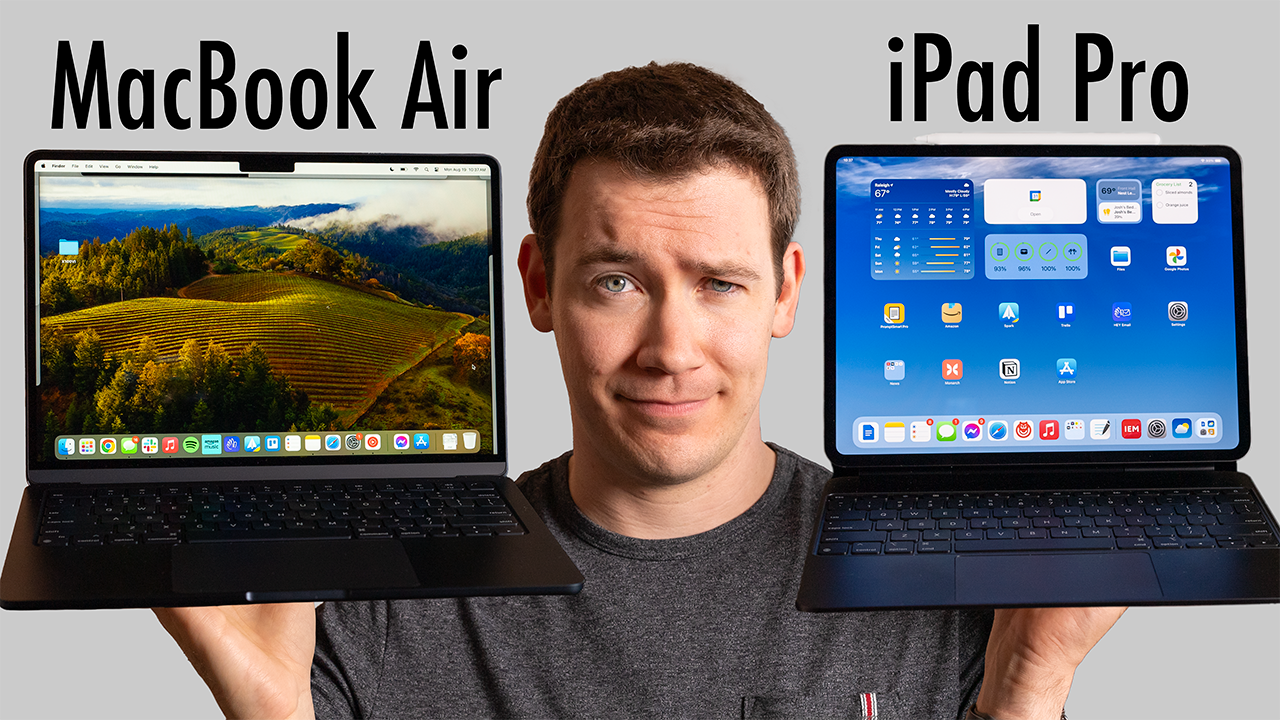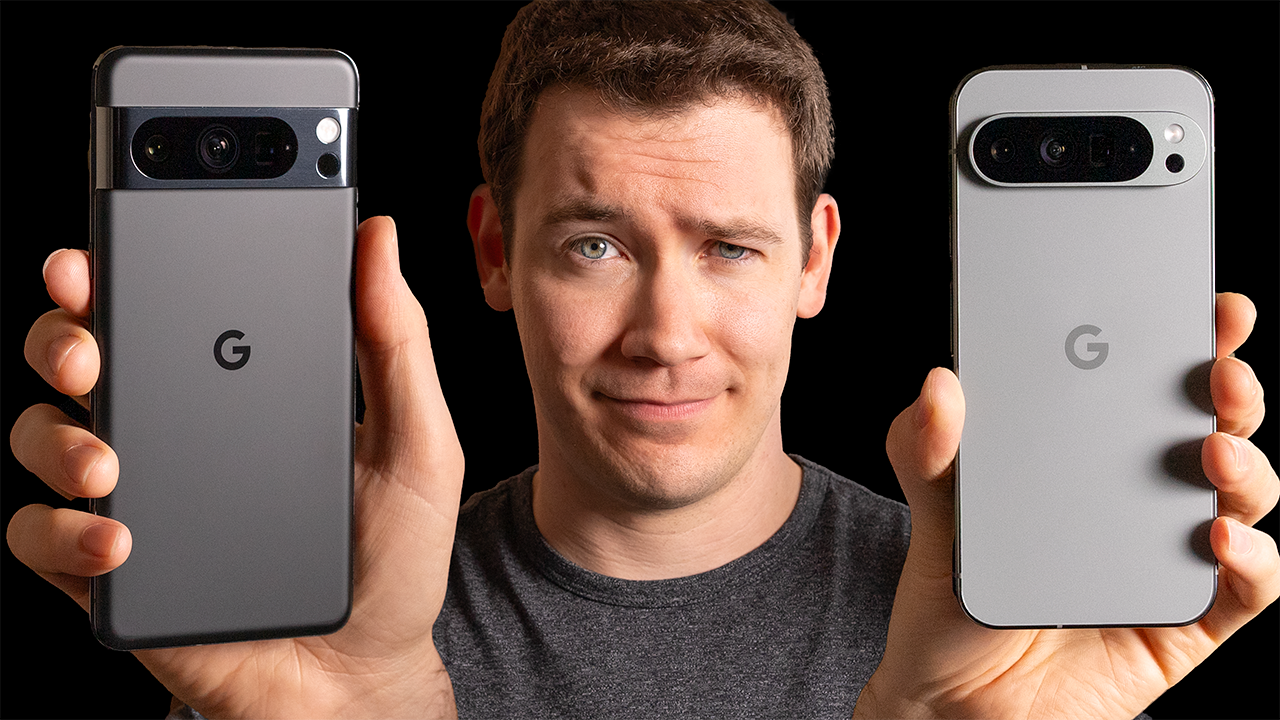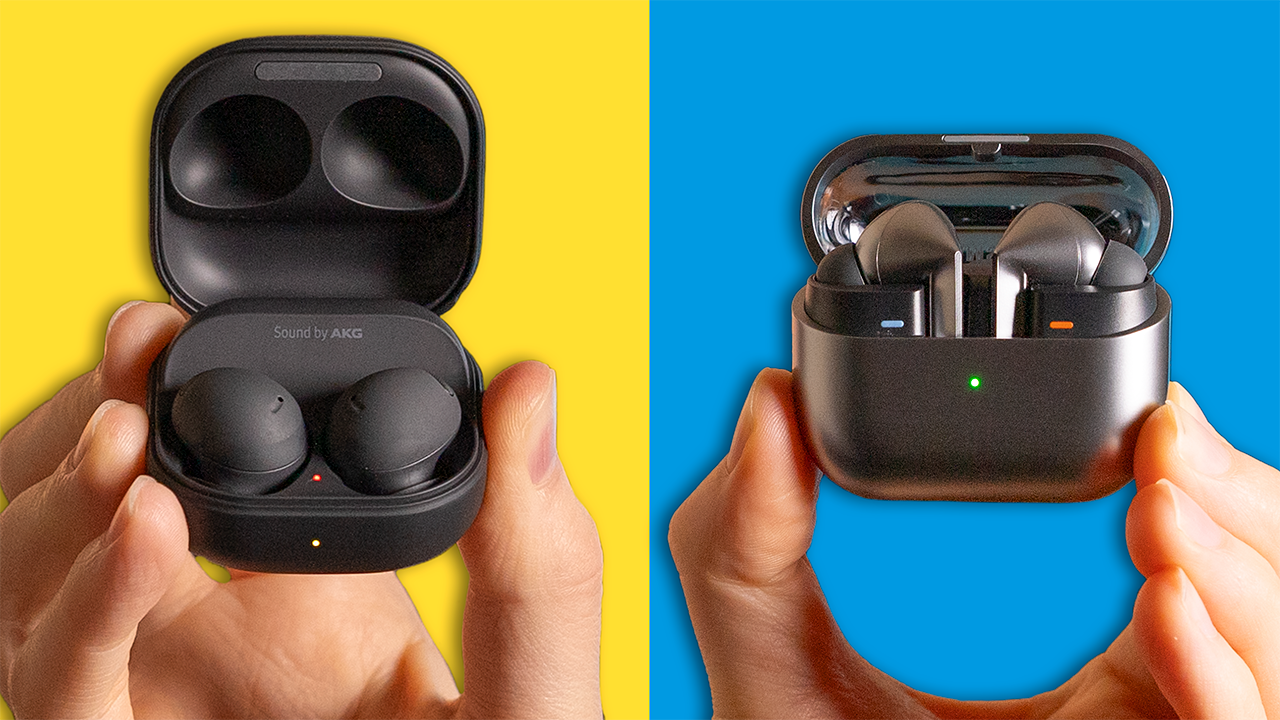Product Links:

New M4 iPad Pro (Affiliate Link)

New iPad Pro Magic Keyboard (Affiliate Link)

New Apple Pencil Pro (Affiliate Link)
M2 iPad Pro (Affiliate Link)
Apple Pencil (2nd Gen) (Affiliate Link)
Previous Gen Magic Keyboard (Affiliate Link)
View all of our recommended products
M2 / M1 vs. M4 iPad Pro – Which Should You Buy?
by Josh Teder
I’ve spent several years with an M1 iPad Pro. Now that Apple has released the latest update to the iPad Pro form factor, which includes several significant changes, let’s review what sets the new iPad Pro apart from the previous design and whether or not I think it’s worth upgrading to or going with versus the previous generation that you can likely now find on sale.
The New Magic Keyboard
The first huge advantage I’d give to the new iPad Pro is its Magic Keyboard accessory. Apple has completely redesigned the Magic Keyboard, and it shows. Though it is still expensive at $349, compared to the previous version, it feels much more like typing on a Mac, thanks to a new aluminum surface and a larger trackpad with a Taptic Engine. The trackpad doesn’t actually physically move, but it feels like it does. You get function keys, so adjusting things like brightness or skipping songs is much easier now.
Even locking the iPad is easier; you just hold down the lock key, whereas before, you had to use the shortcut Command + Control + Q. Another huge difference between the Magic Keyboard and the Pro is the weight. The 13-inch version I have basically weighs the same as my M3 MacBook Air. Compared to the previous generation, this Magic Keyboard is 34 grams lighter, and the iPad Pro itself is 103 grams lighter, weighing 579 grams.
The New OLED Display
The next huge difference between this iPad Pro and the previous model is the new OLED panel. Apple actually used a tandem OLED panel, which is way brighter than a traditional OLED panel of this size. You get 1,000 nits of brightness for SDR and 1,600 nits of peak HDR brightness. This display looks stunning in person; the colors look vibrant and really pop off the screen, and the blacks look deep and great.
The screen also doesn’t have a slightly dimmer border around the edges, as I’ve noticed with the mini-LED panel, and for light text on a dark background, like with the Star Wars crawl, there’s no noticeable blooming like there is with the mini-LED display. But does this new OLED panel introduce any new display issues? No, not really, though some users like myself might be able to pick one thing out. When looking at a white screen, you might see slight green or purple refractions depending on your viewing angle, which can happen with OLED displays.
However, when you keep the iPad stationary and have a white screen up, it hasn’t bothered me to the same degree it does on cheaper OLED panels used in phones like the Pixel 8A. The last thing to mention about the display tech with the new iPad Pro versus the previous generation is that the white balance of these two displays is quite different. The new OLED iPad looks warmer than the mini-LED backlit iPad Pro. If I didn’t have the mini-LED iPad Pro right next to the new one, it’s unlikely I would have noticed much of a difference between the white balance of their two display panels.
Design and Speaker Changes
The next thing that sets the new iPad Pro apart from the previous generation is the overall design. Apple slimmed down the iPad Pro, making it easier to grip and hold in your hand. That thinness, combined with its lighter weight, just makes it an iPad I found myself wanting to hold more than any other previous iPad of this size.
You might think that slimming down the iPad would reduce the sound quality coming from its speakers, but Apple’s redesigned speakers on the new Pro sound identical to the previous design. I couldn’t really tell any difference between them.
Camera Changes
Apple has also changed the camera system on the new iPad Pro, taking out the ultra-wide camera from the previous generation and giving you a 12-megapixel wide camera. This is fine by me because the only thing I’ve ever used the back camera for is document scanning. Speaking of which, Apple added a new True Tone flash to help combat shadows. It’ll instantly take multiple photos of your document with a new adaptive flash and stitch them together to get you a better scan.
The other important camera change that Apple made is with the front-facing camera. Apple moved the camera to the top of the device’s landscape orientation and adjusted where the mics are. There’s one on the right near the camera, one at the top right of the device, and another on the left side, all to help improve the experience of video calls when you keep the iPad Pro on the Magic Keyboard. By moving the camera to the landscape position, Apple also decided to move the Face ID components there as well. I found it to be more accurate with Face ID on the left side of the iPad. With the old model, I found too often that when opening up the iPad, my hand would block part of the Face ID sensor array, and by the time I had my iPad in place, it would just bring up the passcode keypad instead.
The New Apple Pencil Pro
The next advantage of the new iPad Pro is the new Apple Pencil Pro. And trust me, if you’re going to get an Apple Pencil, you want the version that can magnetically attach and charge from the iPad. Otherwise, if you get the other version that you have to plug into the iPad when you want to use it, often you’re going to find its battery dead.
The new Apple Pencil Pro features Find My support, which is the first time that’s been available in an Apple Pencil. Though it doesn’t support the precision finding you might be accustomed to with iPhone and AirTags, the new Apple Pencil Pro also, for the first time, features haptics, which makes you feel like you’re pressing a button that’s not physically there, very similar to how the Magic Keyboard trackpad works. Pressing the Apple Pencil button will bring up its menu, and quickly double-tapping the pencil will switch you between two different pen styles, like a pencil and an eraser. For you artists, Apple also added a barrel roll feature to make using the pencil more intuitive than ever.
The New M4 Chip
The new iPad Pro’s last major advantage over the previous generation is the new M4 chip. This processor helps power the new OLED display and is significantly faster than the previous M2 processor. Depending on what you use your iPad for, this difference may not be worth it.
Advantages of the Previous Generation
Now, let’s discuss the previous mini-LED iPad Pros and their advantages. The main one is the price. You can likely find the previous-gen iPad Pro and its accessories, such as the second-gen Apple Pencil and the previous-gen Magic Keyboard, on sale right now.
What about battery life? You might think that Apple making the new iPad Pro thinner would have actually reduced its battery life, but it actually has the same battery life as the previous-generation M2 iPad Pro. Unfortunately, that means you’re likely to get okay battery life, which has been one of the weaker parts of the M2 iPad Pro’s user experience, especially when compared with my MacBook Air.
Another advantage for the previous iPad Pro models is if you already have an Apple Pencil second generation, it is compatible with those models of iPad Pros, but the second-gen Apple Pencil is incompatible with the new M4 iPad Pro. Also, another thing to keep in mind with these new iPad Pro models is an iPad is an iPad. iPadOS is still a walled garden operating system. It’s not as open or flexible as macOS with what you can download, but you get more versatility in terms of its form factor and accessories like the Apple Pencil. But until Apple gives you a solid reason for going with the M4 iPad Pro, you’re fine getting the M2 version.
The M4 iPad Pro starts at $1,000 for the 11-inch model and $1,300 for the 13-inch model. I’ve left purchase links at the top of this post so you can compare their prices against the previous generation iPad models. If you want to see my full review of the previous-gen mini-LED iPad Pro, you can get to that by clicking here:
To see more of my reviews and comparisons on other Apple products, you can get to those by clicking the playlist:
Considering that the new iPad Pro with its Magic Keyboard weighs about the same as the MacBook Air, these are similar form factors, I’m actually going to compare both of these devices in an upcoming comparison, so if you want to see that, make sure you’re following the site and subscribe to the YouTube channel.


